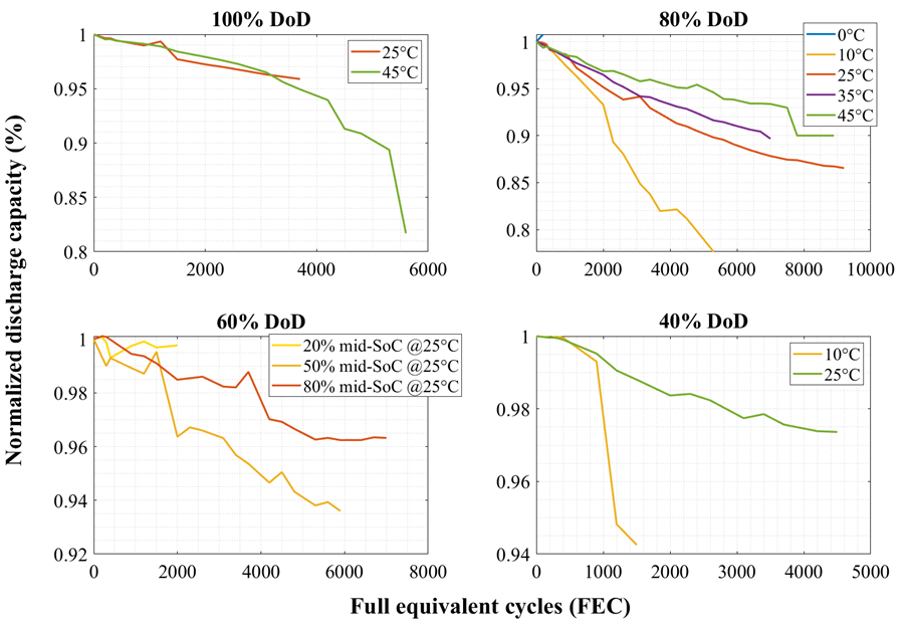In the framework of the GHOST project, the electro-thermal and lifetime models of the LTO cells are developed to propose a robust modelling tool able to reproduce the voltage, temperature and lifetime behaviour of the LTO cell. In the March 2019 Newsletter, the electro-thermal results were presented.
Since March 2019, VUB and IKERLAN have launched a lifetime testing campaign to assess the ageing behaviour of the LTO cell. In this purpose, a test methodology for assessing lifetime behaviour was defined with a test plan which involves 78 cells to be aged with 60 cells dedicated to cycle life tests and 18 cells to calendar life. The tests debuted in March 2019 and so far, more than 30 cells have been aged under many conditions. Regarding the calendar life testing handled by IKERLAN, 18 cells were sent in M18, and the testing is also on-going. Also, different influencing factors have been tested: temperature, state-of-charge, charging and discharging current.
Figure 1 and Figure 2 show the lifetime result graphs with the cycle life and calendar life results, respectively. As expected, the lifetime of the LTO cell is not much affected by high-cycling temperature or by storage. At ambient temperature (25°C) the cell has lost only 10% of its capacity at 80% after more than 9000 cycles. This means in an automotive application, the LTO cells propose a robust solution for lifetime degradation.
In order to complete the MS6, VUB is gathering all the ageing data to propose a lifetime mode in March 2021.

Figure 1. Cycle life testing results of the LTO cells.

Figure 2. Calendar life testing results of the LTO cells.

